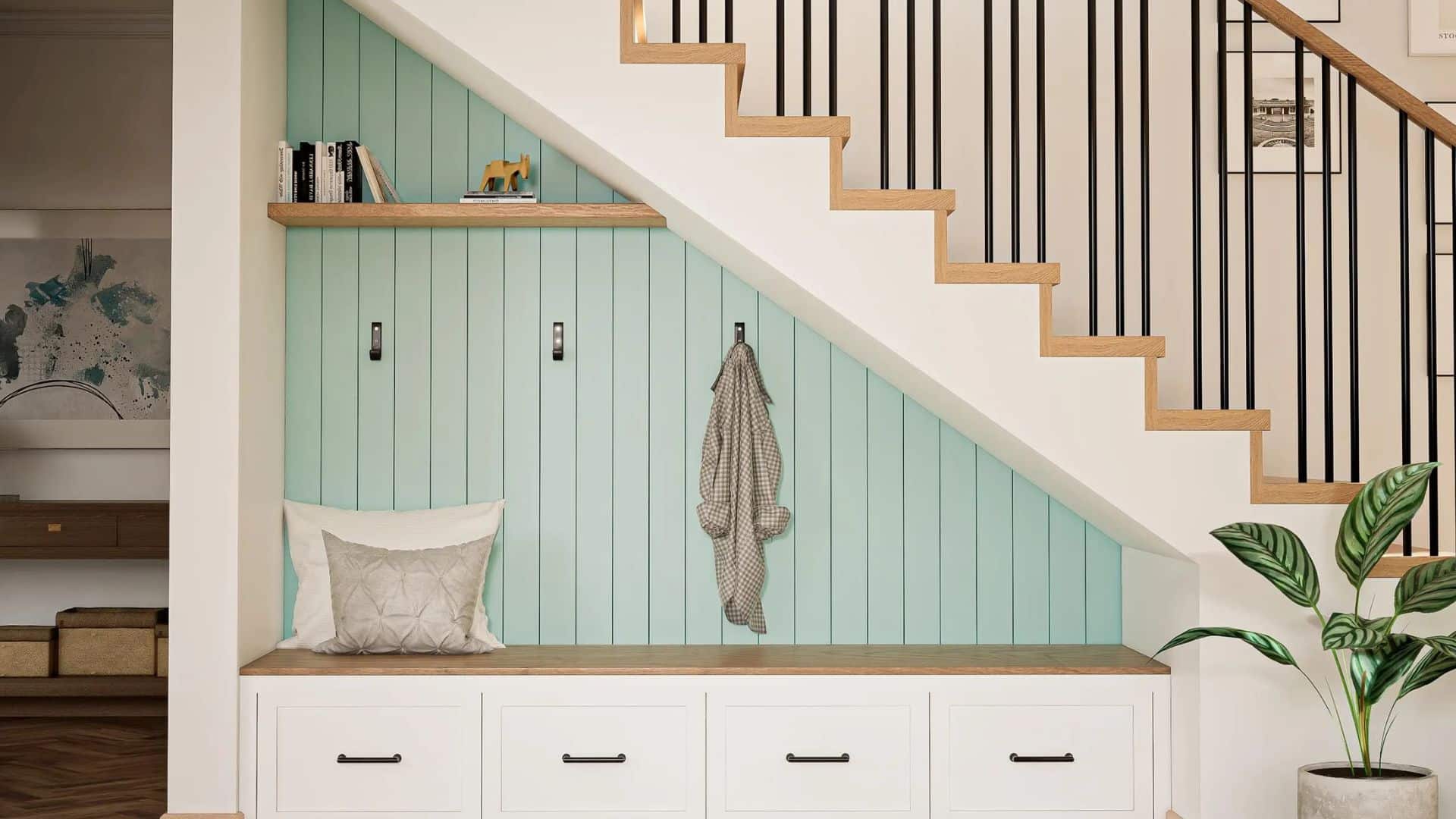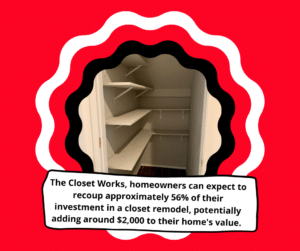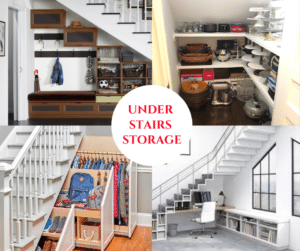
The area under your stairs is one of the most overlooked spots in a home. Often hidden behind drywall or filled with random clutter, it’s easy to ignore. But with a little creativity, this space can become incredibly useful. Under stairs storage can help you declutter, stay organized, and even boost your home’s resale value. Whether you want more room for your coats, a spot for the dog’s bed, or a hidden pantry, this guide walks you through how to plan, design, and use this space more effectively—without needing to be a professional contractor.
Evaluate Your Under Stairs Space
Before you start dreaming about drawers and cubbies, take time to evaluate the space. Not all under-stair areas are created equal. Some are roomy and open, while others are narrow, awkwardly shaped, or already enclosed. You’ll need a clear understanding of what you’re working with before choosing a storage solution.
Start by measuring:
- Height from the floor to the base of the stairs.
- Depth from the front-facing edge to the back wall.
- Width and angle of the stair slope.
Next, examine the space behind the wall (if it’s closed off). You may need to open a small access panel or check blueprints. Look for obstructions like:
- Electrical wiring or outlets
- HVAC ducts
- Plumbing lines
- Support beams
While those things don’t make under stairs storage impossible, they may limit how much of the space you can safely use—or require help from a contractor.
Think about location, too. If your staircase is near the front door, the area could become a convenient mudroom or coat closet. If it’s in the hallway or basement, it might be better suited for long-term storage or even a compact reading nook.

Pick What You Want to Store
Once you understand the layout and limitations of your space, the next step is deciding what you want to store there. This will influence your entire design. Some people want to stash seasonal bins. Others want a space to drop keys, shoes, and bags every day.
Ask yourself a few questions:
- Will I need access daily or occasionally?
- Is the goal convenience or long-term storage?
- Do I want the storage visible or hidden?
Here are some ideas to spark inspiration:
- Shoes, jackets, and backpacks – Ideal for busy families. Add hooks, cubbies, and seating to create a mini-mudroom.
- Cleaning supplies or vacuums – Store bulky items in deep pull-out drawers or behind a cabinet door.
- Books and games – Turn the space into a mini-library or board game station.
- Wine or beverage storage – Add a built-in rack or a small wine fridge for entertaining.
- Pet areas – Tuck in a cozy bed, litter box, or feeding station.
- Holiday decor or seasonal gear – Ideal for deep or enclosed spaces you don’t need to access regularly.
- Craft or hobby supplies – Keep everything neat and out of the way with labeled drawers and containers.
Choosing your storage purpose early makes the design process smoother—and ensures the final product fits your lifestyle.
Choose a Storage Style That Fits
Under stairs storage can be as simple or as custom as you want. Your design choice will depend on your budget, DIY skills, and home style. Even small upgrades can make a big difference.
Here are some popular storage styles:
-
Built-in cabinets or drawers
Great for a seamless look that blends with your home’s decor. These can hide clutter and work well in entryways, hallways, or formal spaces. -
Open shelves or cubbies
These are easy to build and offer visible, grab-and-go access. Add labeled baskets or bins for a tidy appearance. -
Pull-out drawers or sliding units
Maximize narrow spaces with slide-out drawers for shoes, pantry items, or kids’ toys. -
Closet-style with a door
Install a traditional or sliding barn door to create a hidden closet. This works well if you’re storing bulky or less attractive items. -
Pet nook, reading space, or small office
If the space is tall enough, consider building in a bench or desk. Add cushions, lighting, or shelves for a functional nook.
A quick search online or on Pinterest can give you countless visual examples. Some homeowners even combine multiple ideas—like a reading nook with hidden drawers underneath.
Plan Your Layout and Materials
Now it’s time to bring your vision to life. Start with a rough sketch. Use graph paper or free online design tools to map out the space. Make sure to leave enough room for movement and access.
When planning your layout:
- Prioritize accessibility for items used often.
- Use vertical space for shelves, hooks, or tall cubbies.
- Plan for lighting if your space is dark or enclosed.
Material choices matter, too. For durability and finish, consider:
- Plywood or MDF for shelves, drawers, and basic framing.
- Solid wood or laminate for visible surfaces.
- Paint, stain, or wallpaper to match your home’s interior.
Helpful extras include:
- LED strip lights for visibility.
- Labeling systems for bins and drawers.
- Sliding mechanisms for smooth pull-out drawers.
- Trim and molding to make everything look built-in.
If you plan to paint, use moisture-resistant finishes—especially for basement stairs or homes in humid climates.

DIY vs. Hiring a Professional
Some homeowners tackle under stairs storage projects themselves. Others prefer to bring in a contractor for a cleaner finish. There’s no wrong answer—it all depends on your skill level, tools, and how complex the design is.
DIY is a good choice if:
- You’re installing pre-made cubbies, shelves, or bins.
- The wall is already open or accessible.
- You have tools like a drill, level, and circular saw.
- You want to save on labor costs and don’t mind a weekend project.
Consider hiring a professional if:
- You’re planning a custom built-in with doors and drawers.
- The space includes wiring, plumbing, or HVAC components.
- You want a polished look that matches existing trim.
- You’re short on time or unsure about building safely.
Professionals can also help if you’re trying to add resale value. A well-designed storage space under the stairs can appeal to buyers and give your home a more finished look.
Maintain and Organize Over Time
Installing under stairs storage is just the beginning. To keep it useful, you’ll want to organize and maintain the space regularly. A messy storage area is just wasted space all over again.
Follow these simple tips to stay organized:
- Group items into categories (shoes, tools, holiday decor, etc.).
- Use bins or baskets for small items and label everything.
- Store rarely used items in harder-to-reach areas.
- Rotate seasonal items to keep things current and accessible.
- Vacuum or wipe surfaces every few weeks to avoid dust buildup.
To prevent damage:
- Use cedar blocks or dehumidifiers in damp areas.
- Add felt pads under bins or drawers to protect floors.
- Check for pests or moisture if the space is near the basement.
Keeping your under stairs storage organized doesn’t take much effort—it just takes consistency.
Why Under Stairs Storage Is Worth It
There’s a reason more homeowners are embracing under stairs storage. It offers a smart, affordable way to make use of every square foot of your home. Instead of letting that space collect dust—or worse, clutter—it can become one of the most functional spots in your house. Whether you’re looking to organize daily essentials or hide away holiday decorations, there’s a solution for every home and budget. Even the smallest project can make a big difference.
And if you’re unsure whether your under-stair area is suitable for storage—or if you want peace of mind before cutting into any walls—a professional home inspection can help. A trained inspector can identify any hidden plumbing, wiring, or structural considerations you’ll want to know about before starting your project. Need help assessing your home’s hidden potential? Schedule a home inspection with our team today. We’ll help you understand your home from top to bottom—so you can renovate with confidence.



